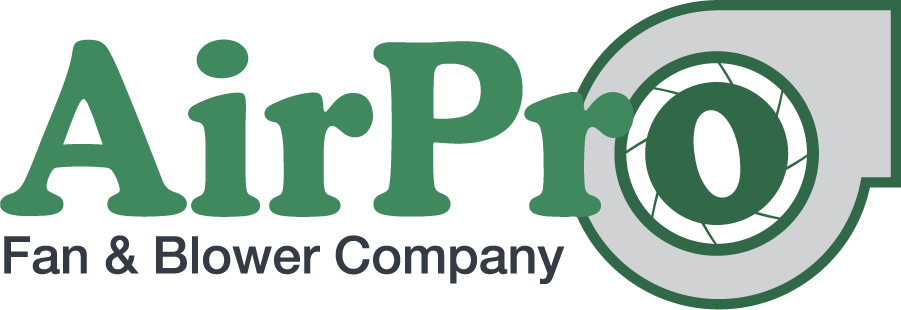There are several configurations of blades in the wheel of an industrial centrifugal fan or blower: inclined, curved, tipped, forward, backward, radial… sometimes it helps to get a visual. Here, we’re taking a close look at the backward inclined high volume fan.
How the High Volume Fan Works
Very similar to the backward curved fan, the wheel can rotate in the direction best-suited for your application, with the air entering in the middle of the wheel, hitting the hub, and then coming out along the travel of the blade. The air loses friction with the blade almost immediately in this flat blade configuration.
Air Volume Determines Backward Inclined High-Volume Blower Model
When specifying this type of fan, airflow volume is a big factor. To handle high volumes at low static pressures, you may opt for a single or double width blade model. A double width blade allows you to increase your air volume capacity without increasing the wheel diameter. It works with belt drive, direct drive, or direct-coupled arrangements. The backward inclined wheel design is a preferred solution for many industrial applications. Common ones are: dust collecting, pollution control, and high-temperature applications.
Visit the Backward Inclined Fan Product page for more information, performance and design specifications.
Hear it from the Application Engineer
Senior Application Engineer Chet White demonstrates the high-efficiency backward curved fan in this 30-second video.
When you’re ready to start your project, reach out and connect with one of our application engineers to discuss the details of your specification.
Related Content on Industrial Fan Applications
There are many factors to consider in every industrial fan application. We’ve seen it all. Here are more articles that might be of interest as you think about your application:
- It’s in the Baghouse: Fan Efficiency for Dust Collectors
- Understanding Fan Static Pressure
- High-Efficiency Backward Curved Fan
- Backward Inclined Fan
We welcome comments and questions via our LinkedIn Page, and you can always Contact Us or Request a Quote for more details.
